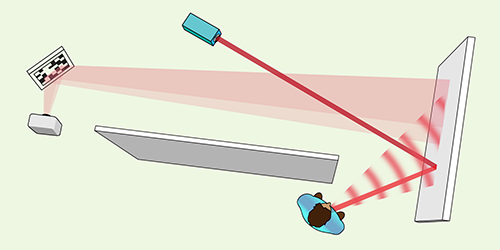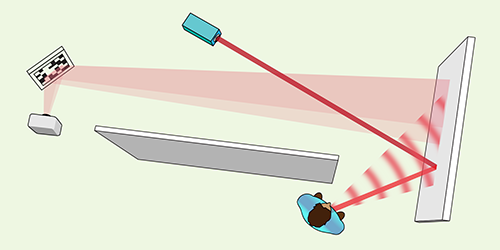Seeing Around Corners in Real Time
The camera never lies, but sometimes it makes an educated guess. This is the basis of non-line-of-sight imaging, in which objects around a corner are revealed by reconstructing the scene from multiply scattered light. The technique has obvious uses in search and rescue and surveillance, and it could also provide a way for self-driving cars to anticipate hazards—if the image can be reconstructed quickly enough. Now, Gabriella Musarra, at the University of Glasgow, UK, and colleagues have demonstrated a high-speed system that can return a 3D image of a hidden scene with subsecond acquisition times.
The team’s experiment consists of a laser and a detector whose direct view of an object is blocked by a barrier. However, an indirect view is possible thanks to a reflecting wall. Pulses from the laser strike the wall and bounce toward the hidden object, which scatters photons in all directions, including back toward the wall. A small proportion of scattered photons eventually reach the detector, which measures their travel time to infer where behind the barrier the object might lie.
A detailed picture requires a setup with high temporal resolution, which Musarra and colleagues maximized by using a single-pixel, single-photon detector with an exceedingly fast response time. Instead of scanning the laser across the scene, as is usually the case, the team used an array of movable microscopic mirrors—the same device used in digital projectors—to scan the detector’s field of view over the surface of the reflecting wall.
The experiment captures a scene in 3D in just 0.8 seconds—a rate that is at the forefront of current efforts—but more efficient reconstruction algorithms could make it even faster, allowing moving objects to be imaged.
This research is published in Physical Review Applied.
–Marric Stephens
Marric Stephens is a freelance science writer based in Bristol, UK.





